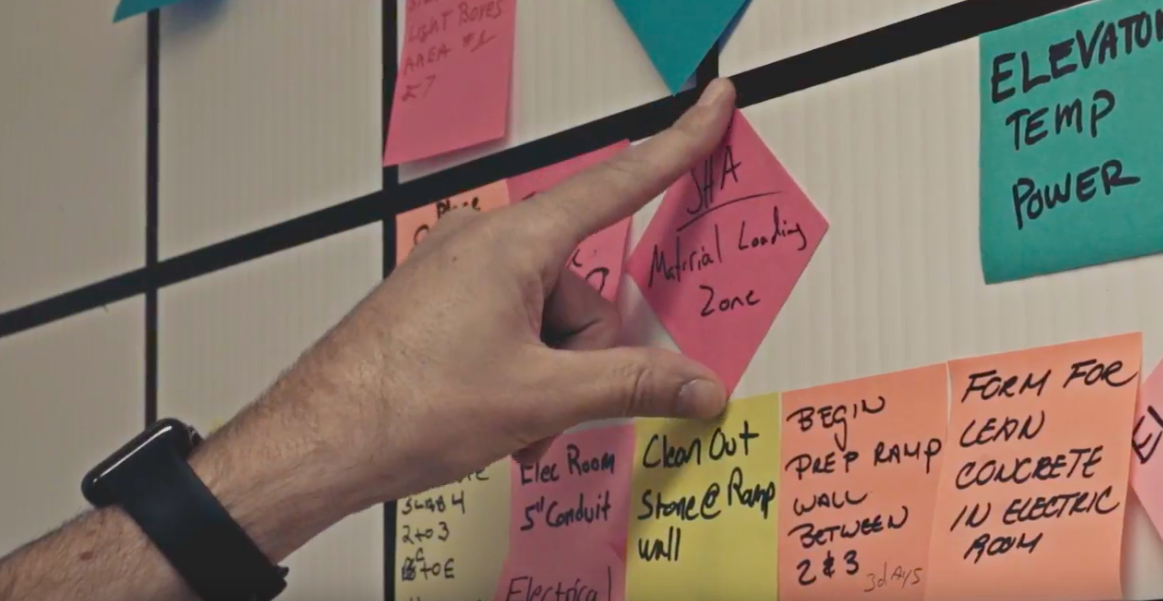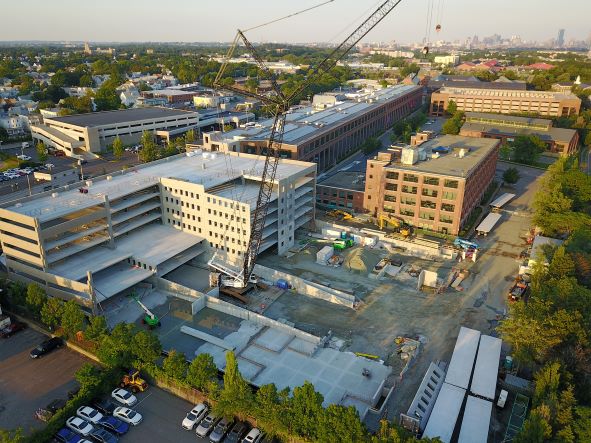- Who We Are
-
Our Work
- Educational
- Senior Living
- Hospitality
-
Healthcare
- Partners Urgent Care
- Yale New Haven Health- Medical Office Building
- The Hospital of Central Connecticut - Advanced Wound and Hyperbaric Medicine Center
- Connecticut Children's - Infusion Center and Gastrointestinal Clinic
- Connecticut Children's - Specialty Care Center
- MidState Medical Center- Post-Anesthesia Care Unit Expansion & Renovation
- Commercial
- Specialty Work
- How We Do It
- Our Blog
- Industry Tidbits
- Join Our Family
- Contact Us
5 Lessons for Improved Lean Construction Implementation
May 29th, 2018
With the completion of athenahealth’s West Garage, we have successfully finished our first Lean project. We encountered some unforeseen obstacles during site work and foundations, but with Lean we overcame these obstacles and hit our precast erection start date.
With our first full Lean project complete, we learned five valuable lessons to apply to our projects going forward.
1. Subcontractor participation is essential.
In the past, we created the construction schedule, with little or no input from the subcontractors. Then we gave it to them and told them what they were expected to do and when they were expected to do it. The Lean approach is very different. Every sub has the opportunity to have input into planning the work. In fact, it’s important that every subcontractor participates.
With Lean we seek the subcontractors’ input and commitment to complete tasks as planned, so the information for our schedule is more reliable. The subs are better able to coordinate their work with each other and understand what the other trades need from them to make their work ready.
There was tremendous learning curve for both C.E. Floyd and the subcontractors on the project. Many of the subs had never seen Lean before, so we needed to convince some of them that there was a benefit to using this approach. We had a couple of subs who were reluctant to participate in Lean. They became a limiting factor throughout the project and held back progress.
2. Logistics planning is just as important as scheduling.
The Lean boards provide a great visual to help us break down our planning into daily tasks and to identify constraints that may prevent tasks from getting completed as planned. They are a constant reminder for everyone on site that planning ahead helps the work flow more smoothly. However, we noticed that just having the boards is not enough to realize the full value of the pre-planning. We needed a site plan on display too.
Due to the small size of the site, logistics became a common constraint that prevented some of the work from happening as planned. With the site plan hanging right next to the boards, we could easily refer to where things were going to happen, so everyone could see if there were additional constraints that need to be addressed and worked out in advance of the work.
3. Break down work into smaller physical areas.
When creating the daily work plan, sometimes we saw that several trades would be working in the same general area. By breaking the work areas into smaller sections, we were better able to compartmentalize the subcontractors to make sure each trade had the space it needed to be most efficient and create flow. We were also able to see where each trade would store materials and how often it would need to coordinate deliveries – working towards the ultimate goal of just-in-time delivery.
4. Focus on milestones and their relation to the master schedule. 
We used to spend time updating our master schedule by breaking it down into areas and sequencing. Instead, we now focus on the milestones from the master schedule and coordinate those milestones with our Lean boards. The milestones are posted on the boards, so we can see what critical targets are coming up in the next 4-6 weeks. Then when we’re working with the subcontractors, we can effectively pre-plan everything that needs to happen to hit that milestone by eliminating all of our constraints and making the work ready.
To effectively achieve any goal, it’s important to break it down into smaller and smaller steps to make it less overwhelming and easier to see how to get there. Start at the end goal and work backwards to determine the tasks and timeframe that will enable you to achieve your end goal. This is precisely what Lean does, and the boards are the visual map to get everyone to that end goal.
5. Evaluate and improve
Most importantly, Lean is allowing us to better evaluate the performance of both the subcontractors we hire and our project success. The make ready plans, constraint management and daily huddles play a key role in our focus on continuous improvement. Now that many of our projects are using the Lean process, we’re learning which subcontractors need more training on how to plan their work. We also have a better understanding of each subcontractor’s strengths and weaknesses. The same can be said for our own people too.
Chris Floyd, President and CEO of C.E. Floyd, mentions that one highlight of Lean construction includes continually improving by investing in our people in order to provide more value for our customers. Using Lean is making it clear where we need to work with our own employees to help them improve. We can provide better and more customized training opportunities for people based on our observations, which improves our teams and ultimately the success of our projects.
We’re also making real-time changes on our other projects based on lessons learned. For example, we’re getting our project engineers more involved in the constraint management process by having them keep track of any constraint that may impact the job. So during a planning session, everyone can scan the master list of constraints and discuss what might impact their ability to start or complete their work, whether it’s a constraint that has already been discussed or something completely new.
Lean is already making a positive impact on the execution, consistency and predictability of our projects. It is enabling us to prepare for success and provide service above all else.
Contact us to see how we can help you with your next construction project.
Check out our other articles in this series:
Lean Construction is a Cultural Fit









